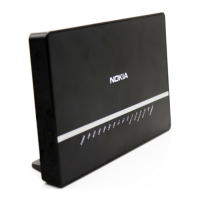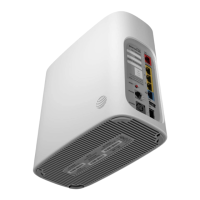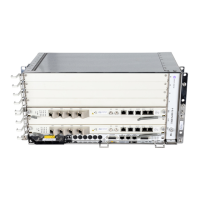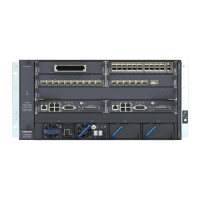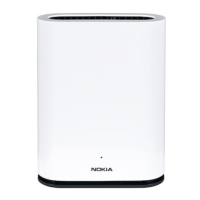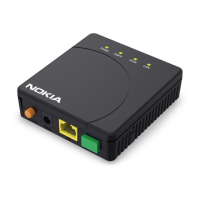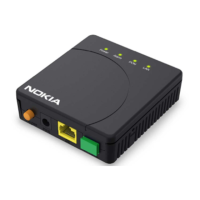FD 100/320Gbps NT and FX NT IHub Services Guide Services Overview
Issue: 13 3HH-11985-AAAA-TQZZA 55
-------------------------------------------
...
customer 5 create
description “Nokia Customer”
contact “Technical Support”
...
-------------------------------------------
A:A:ALA-12>configure>service#
3.8.3 Configuring an SDP
The most basic SDP must have the following:
• A locally unique SDP identification (ID) number.
• The system IP address of the originating PE and the far-end PE.
• An SDP encapsulation type =MPLS.
3.8.3.1 SDP Configuration Tasks
This section provides a brief overview of the tasks that must be performed to
configure SDPs and provides the CLI commands.
Consider the following SDP characteristics:
• SDPs can only be created with encapsulation type MPLS.
• Each distributed service must have an SDP defined for every remote PE to
provide VLL, VPLS, and VPRN services.
• A distributed service must be bound to an SDP. By default, no SDP is associated
with a service. Once an SDP is created, services can be associated to that SDP.
• An SDP is not specific or exclusive to any one service or any type of service. An
SDP can have more than one service bound to it.
• The SDP IP address must be a peer PE system IP address.
• In order to configure an MPLS SDP, LSPs must be configured first and then the
LSP-to- SDP association must be explicitly created.
• In the SDP configuration, automatic ingress and egress labeling (targeted LDP) is
enabled by default. Ingress VC labels and egress VC labels are signaled over a
TLDP connection between two PEs.
Note that if signaling is disabled for an SDP, then services using that SDP must
configure ingress vc-labels and egress vc-labels manually.
To configure a basic SDP, perform the following steps:
1 Specify an originating node.
2 Create an SDP ID.

